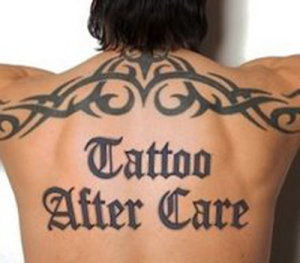The decision to get a tattoo might be a spontaneous, ZNMD-type decision.Or a milestone, a physical marker on your body when small successes in life don't have trophies.
After you've made the emotional decision to get one and thought out the colors & design, it's time to actually show up a tattoo parlor. That's the part that needs a little bit of objective thinking. These are the risks you need to avoid while getting inked.
Tattoo Ink
There has been an increase in the use of pigments used in tattooing, along with many additives. Many of these are approved only for cosmetic use - not for injecting into your skin.
A lot of cheap places might even resort to industrial colors (used for printers and automobile paint) into your skin. Which is, obviously, not safe.
This is why you should look for a renowned tattoo parlor. Ask a lot of questions about the inks - read up on them and see if they're skin safe.
Clean Tattoo Parlor
There will be needles piercing your skin, again and again. With those needles can also come germs, bacteria and potential disease. These include hepatitis and HIV from dirty needles.
A tattoo is a long-term (if not permanent) investment, so don't be afraid to ask about cleanliness, experience, and safety precautions.
If you aren't sure. go somewhere else, or wait until you're able to ask the right questions.
The Needle
A brand new sterile needle -for every tattoo. Ask to inspect the new needle and all the tools involved being sterilized.
A good tattoo artist will have a custom equipment set laid out just for your tattoo - you don't want him improvising when it's your own body at stake.
The artist should be wearing new latex gloves. When the tattoo is done, he should apply Vaseline on it with a new disposable instrument - and not with his hand.
Post-Tattoo Care
A tattoo is a wound on your skin - it's just intentionally colored. Keep it bandaged for at least twelve hours. After you open the bandage - let the wound dry for an hour before washing it (gently!) with soap.
Then, apply a thin layer of antibiotic cream.You have to wash the area and apply the cream twice everyday for 4-5 days. You also can't go swimming, or doing anything that submerges the tattoo in water. And obviously, you can't scratch at it.
After you've made the emotional decision to get one and thought out the colors & design, it's time to actually show up a tattoo parlor. That's the part that needs a little bit of objective thinking. These are the risks you need to avoid while getting inked.
Tattoo Ink
There has been an increase in the use of pigments used in tattooing, along with many additives. Many of these are approved only for cosmetic use - not for injecting into your skin.
A lot of cheap places might even resort to industrial colors (used for printers and automobile paint) into your skin. Which is, obviously, not safe.
This is why you should look for a renowned tattoo parlor. Ask a lot of questions about the inks - read up on them and see if they're skin safe.
Clean Tattoo Parlor
There will be needles piercing your skin, again and again. With those needles can also come germs, bacteria and potential disease. These include hepatitis and HIV from dirty needles.
A tattoo is a long-term (if not permanent) investment, so don't be afraid to ask about cleanliness, experience, and safety precautions.
If you aren't sure. go somewhere else, or wait until you're able to ask the right questions.
The Needle
A brand new sterile needle -for every tattoo. Ask to inspect the new needle and all the tools involved being sterilized.
A good tattoo artist will have a custom equipment set laid out just for your tattoo - you don't want him improvising when it's your own body at stake.
The artist should be wearing new latex gloves. When the tattoo is done, he should apply Vaseline on it with a new disposable instrument - and not with his hand.
Post-Tattoo Care
A tattoo is a wound on your skin - it's just intentionally colored. Keep it bandaged for at least twelve hours. After you open the bandage - let the wound dry for an hour before washing it (gently!) with soap.
Then, apply a thin layer of antibiotic cream.You have to wash the area and apply the cream twice everyday for 4-5 days. You also can't go swimming, or doing anything that submerges the tattoo in water. And obviously, you can't scratch at it.



No comments:
Post a Comment